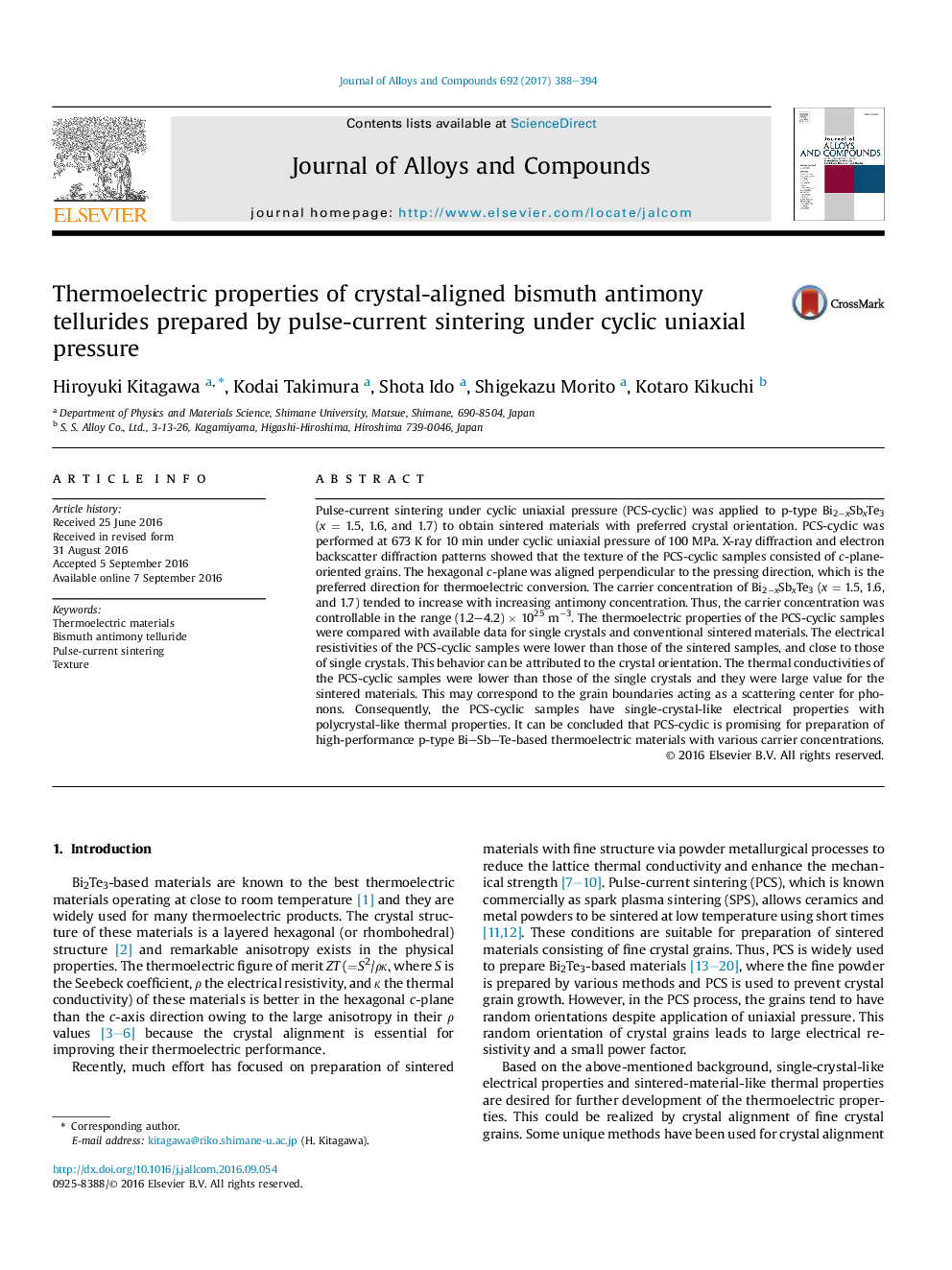| Article ID | Journal | Published Year | Pages | File Type |
|---|---|---|---|---|
| 5461517 | Journal of Alloys and Compounds | 2017 | 7 Pages |
Abstract
Pulse-current sintering under cyclic uniaxial pressure (PCS-cyclic) was applied to p-type Bi2âxSbxTe3 (x = 1.5, 1.6, and 1.7) to obtain sintered materials with preferred crystal orientation. PCS-cyclic was performed at 673 K for 10 min under cyclic uniaxial pressure of 100 MPa. X-ray diffraction and electron backscatter diffraction patterns showed that the texture of the PCS-cyclic samples consisted of c-plane-oriented grains. The hexagonal c-plane was aligned perpendicular to the pressing direction, which is the preferred direction for thermoelectric conversion. The carrier concentration of Bi2âxSbxTe3 (x = 1.5, 1.6, and 1.7) tended to increase with increasing antimony concentration. Thus, the carrier concentration was controllable in the range (1.2-4.2) Ã 1025 mâ3. The thermoelectric properties of the PCS-cyclic samples were compared with available data for single crystals and conventional sintered materials. The electrical resistivities of the PCS-cyclic samples were lower than those of the sintered samples, and close to those of single crystals. This behavior can be attributed to the crystal orientation. The thermal conductivities of the PCS-cyclic samples were lower than those of the single crystals and they were large value for the sintered materials. This may correspond to the grain boundaries acting as a scattering center for phonons. Consequently, the PCS-cyclic samples have single-crystal-like electrical properties with polycrystal-like thermal properties. It can be concluded that PCS-cyclic is promising for preparation of high-performance p-type Bi-Sb-Te-based thermoelectric materials with various carrier concentrations.
Related Topics
Physical Sciences and Engineering
Materials Science
Metals and Alloys
Authors
Hiroyuki Kitagawa, Kodai Takimura, Shota Ido, Shigekazu Morito, Kotaro Kikuchi,
